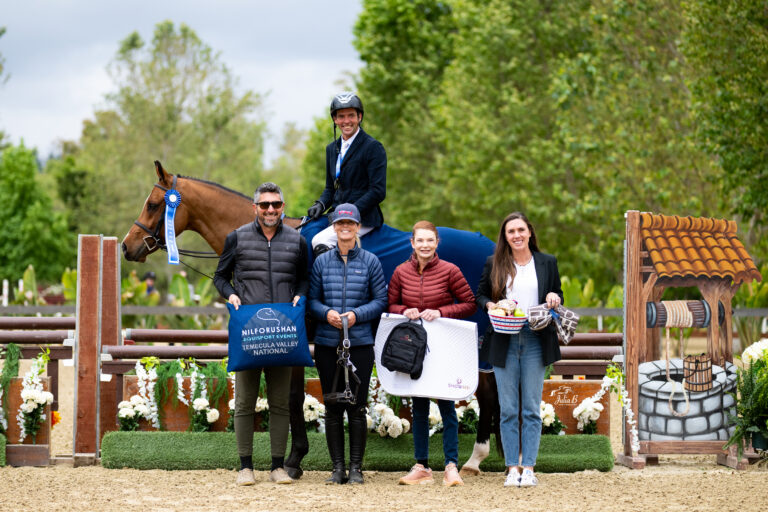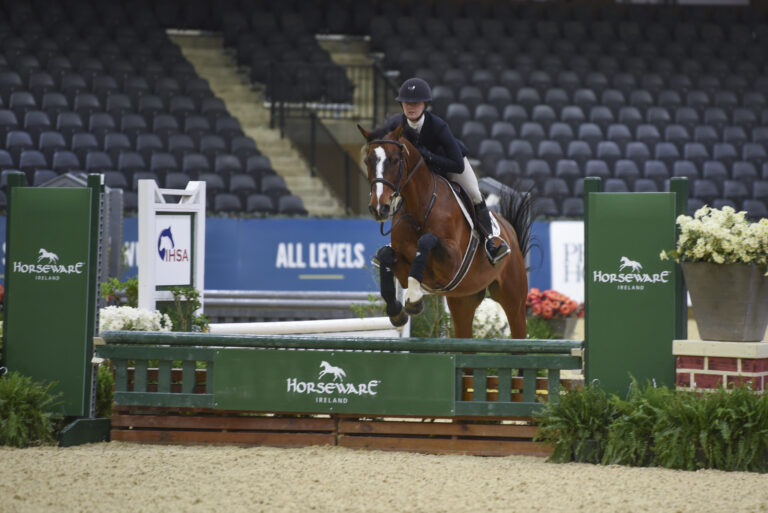
Mention the subject of retirement to Leslie Burr Howard and the 60-year-old Olympic multi-medalist immediately points out that Canada’s Ian Millar is a decade older and still going strong. “After Ian retires, I figure I’ll have 10 more years,” says the rider, whose competitive history on the website of the FEI (International Equestrian Federation) runs 15 pages, back to the 1980s and her first big grand prix jumper, Chase the Clouds.
So it’s tempting to use the word “durable” to describe Leslie, whose show-jumping career has stood the test of time.
True, she’s still winning with the kind of style that earned her two Olympic team medals, the World Cup title and scores of grands prix. But it is the way Leslie has endured, not the fact that she continues to compete successfully at her age, which gives her an eternal quality. Through the years, she has kept the same sparkle, the same trim figure, the same passion for horses.
Leslie has longevity as well as optimism on her side. Her mother, an actress who performed under the stage name Billie Worth, starred in Call Me Madam in London and understudied Mary Martin in the musical South Pacific. She died at age 100 in December after continuing to play tennis until she was 97.
And why would Leslie even think of quitting with a string of good horses and some promising ones coming along? She isn’t missing a beat. Two years ago, she had a successful hip replacement (just as 2016 Olympic individual gold medalist Nick Skelton did in 2011). At her last competition before the operation, she remembers she had a choice of either walking the courses or riding them—the pain in her hip meant she couldn’t do both.
“It’s amazing how well you can do watching other people walk the course, as long as you know where the jumps are,” Leslie says with a smile. She got help from her husband, attorney Peter Howard, who was a 1975 Canadian Pan American Games eventing team silver medalist: “He walked, I’d watch and then I’d ride,” Leslie says.
But since the surgery, age really is just a number for her. She keeps fit riding six or so horses each day and working out in the gym of her home in Wellington, Florida’s Palm Beach Polo enclave. The house is a November-to-April haven from show-to-show travels for Leslie and her spouse, who spend a lot of time during the summers in Canada, where Leslie is a Spruce Meadows regular.
Things are a lot different than in the old days, she points out, when “every week you were somewhere else. Two weeks at Lake Placid was a big deal. Now we all have lovely homes [in Florida]—it’s a lifestyle and it’s a convenience.”
Her décor in Wellington includes horsey touches here and there woven into an understated type of elegance. There are a few mementoes—a framed photo of Leslie winning the 1997 Du Maurier International, the richest grand prix in the world, and just a significant trophy or two. Resting on an end table is a polished silver box engraved with her mother’s name and the signatures of South Pacific’s composer and lyricist, Richard Rodgers and Oscar Hammerstein II.
While she treasures the past, Leslie is more about the present.
“Leslie’s an icon. She rides as well as ever,” says George Morris, who guided her to equitation stardom when she won the 1972 ASPCA Maclay National Championship in Madison Square Garden and worked with her during his time as coach of the U.S show-jumping team.
Leslie’s Brand Of Determination
Horses were always a focal point for Leslie, despite coming from a show-business family. Her late father, Donald Burr, also was on the stage as a character actor and worked as a director.
Although Leslie enjoyed acting and took singing and dancing lessons, it was the pony her parents gave her at age 4 after relentless begging that would set her on the course for stardom in another kind of show business. By the time she was 8, Leslie was breaking and training ponies at the old Highfields Farm near her home in Long Valley, New Jersey, where she trained with Thom and Sharyn Hardy (now Cole).
A few years ago, Billie recollected her daughter’s daring exploits in those early days.
“She’d fall off charging over a fence and then just get back on again. I was terrified,” she admitted, but she had the cure. “I’d go home and drink a martini.”
Leslie’s mother also remembered her daughter’s first horse show, where she was the only one in a class of seven who didn’t get one of the six ribbons. “I cried,” said Billie. “We all cried. She just sat there with her jaw clenched.”
That clenched jaw translated into Leslie’s brand of determination, which started paying off in championships and requests that she ride and show other people’s horses and ponies.
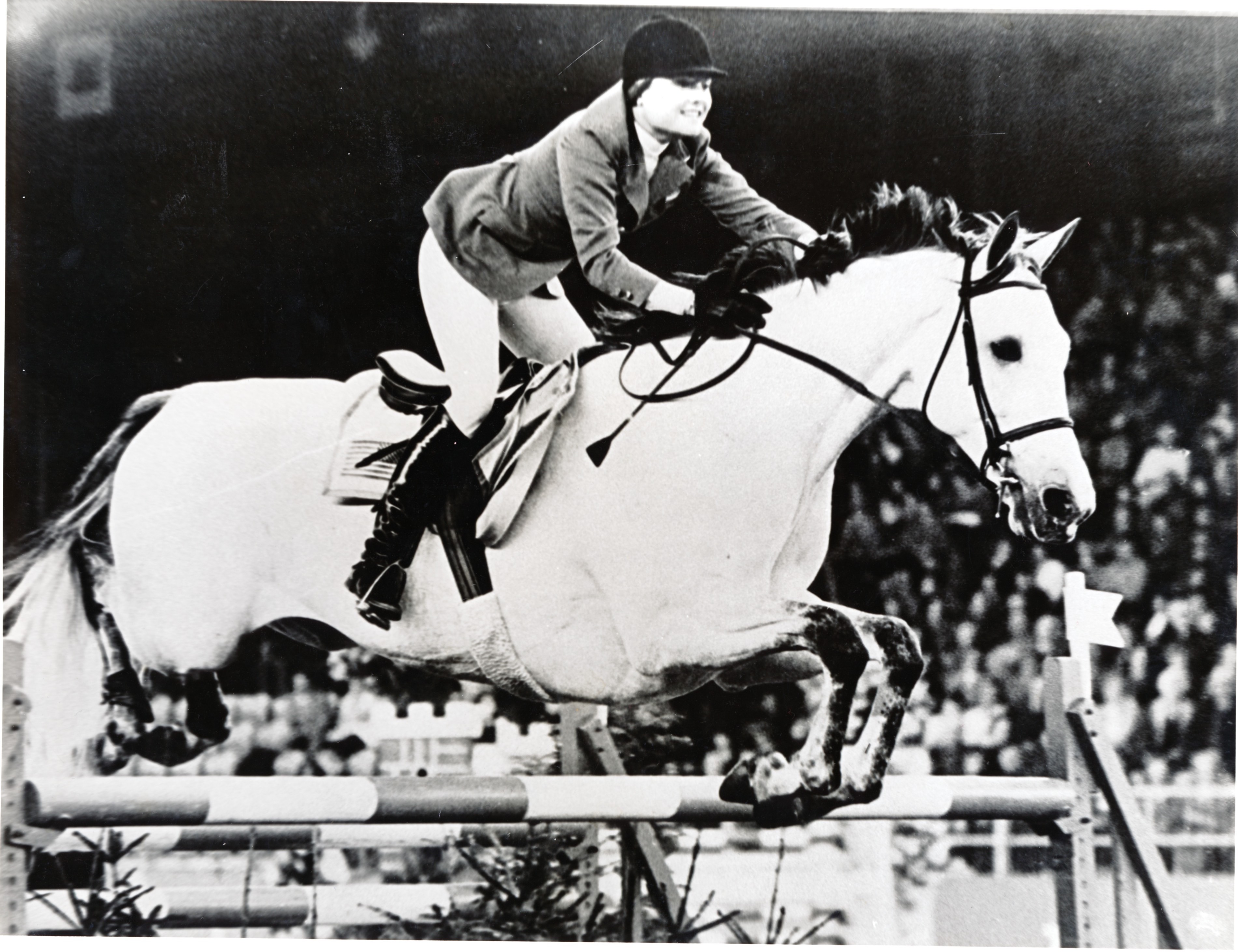
Billie was on hand “as the oldest groom on the circuit” to be a stage mother and give her daughter a little boost when necessary. “One way or the other, she was going to make it work, make sure I had all the opportunities,” Leslie says. Since her parents couldn’t afford fancy mounts, she had to take what she could get.
“That’s why I got good,” she says. “I was always catch-riding other people’s ponies.”
She made the most of what came along. Her Maclay victory on Suzette, a piebald mare loaned to her by Sharyn Hardy, was the initial rung on the ladder to her current fame. But she regrets the trend that has made equitation so highly specialized today, rather than simply a key stop on the road for developing young talent.
“Equitation has a purpose: to make people aware of their style. It’s a great tool to teach people to be aware of their bodies. But it ends up encompassing their whole junior career. It has become its own sport. Kids should learn to move on,” she says regretfully.
“If you’re in a nice position and can keep a nice position while executing your course, that’s the basics of riding well—being in balance with your horse and executing the lines well,” she says, noting that is a contribution that George has made to the sport.
“In the old days, you had so many drastically different styles—the English, who were very forward seat, then the Germans, who were so German and the complete opposite, and the Americans, who rode in a nice, balanced seat with adjustability from one seat to the other.”
But as she points out, everyone around the globe has gotten more sophisticated. “If you go to the Olympics now, you don’t see drastic style differences.”
Adapting with the Sport
By age 18, Leslie decided to try making it as a professional in the horse world. She figured her odds were better there because she had a national reputation than with acting, where she was “at the bottom of the totem pole.” While she didn’t have the luxury of buying herself the horses she needed, others could, and soon enough, they did.
One of her biggest supporters was former U.S. Equestrian Team Chairman Jane Clark, whose partnership with Leslie included the ownership of Extreme, her “extremely sensitive, extremely scopey” 1996 Olympic team silver-medal mount, “a lovely animal.”
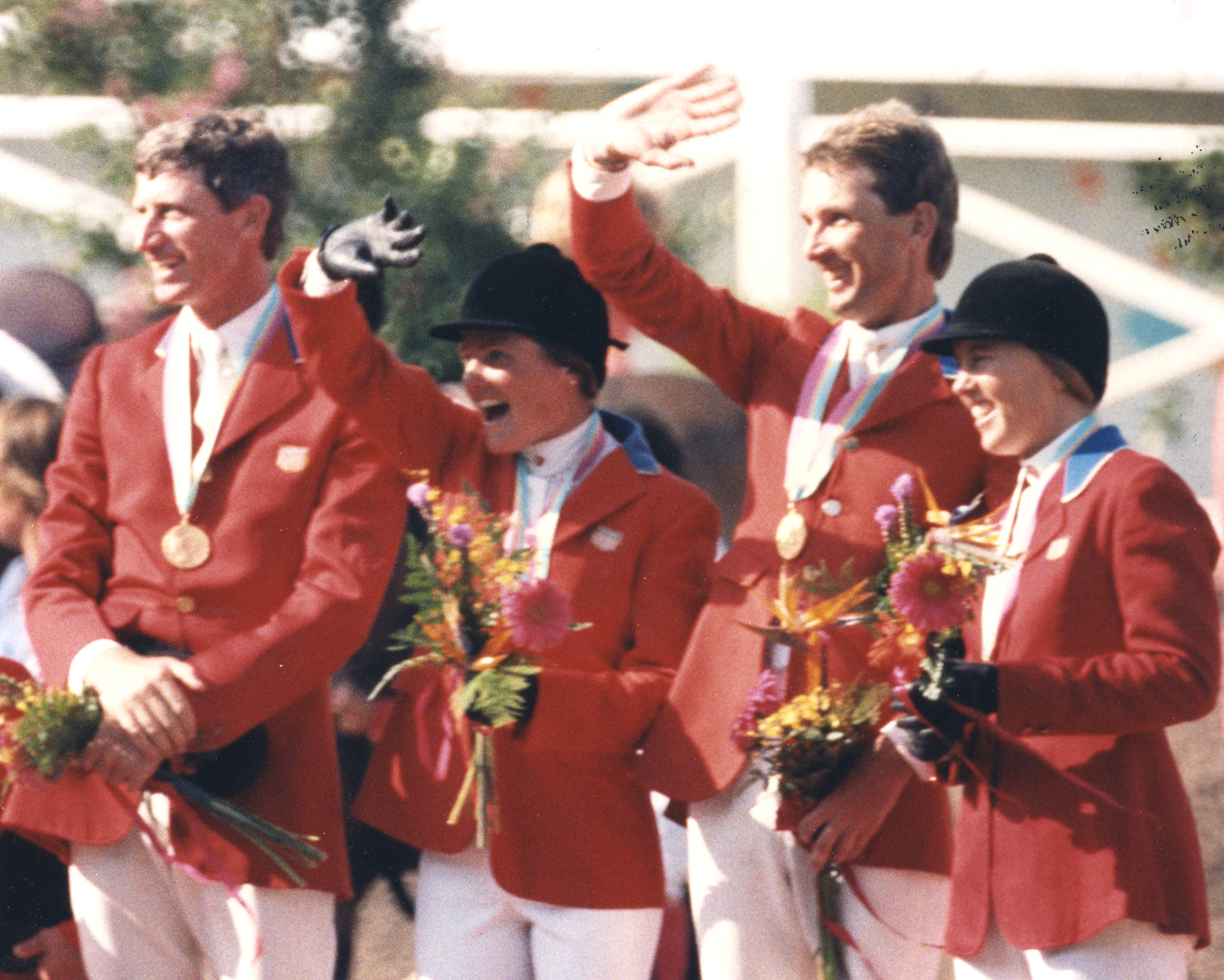
“I am in this sport because of Leslie and how much fun she made it at the beginning when I was first buying grand prix horses and she was riding them. It was a lasting gift,” says Jane, who also took lessons with Leslie when she was riding in the amateurs.
“Leslie has enormous natural talent, and with natural talent on a horse comes the ability to instinctively know them, to feel, to maybe think a little bit ahead of them.” As Jane points out, the type of horses who are competitive today would not have been so competitive 25 years ago.
“Leslie’s inherent natural talent and instincts have allowed her to adapt with the sport,” Jane observes. She also notes that Leslie always put the emphasis on what was important for the U.S. team, not just the horse owner or the rider. Among her awards, Leslie earned the Whitney Stone Cup in 1997 for her efforts on behalf of the U.S. Equestrian Team.
After her junior years, Leslie worked at Stillmeadow Farm in Connecticut, where she was under the wing of Melanie Smith (Taylor), who became one of her teammates on the 1984 Olympic gold-medal squad. She went on to the Fairfield County Hunt Club, where she was mentored by the great horseman Emerson Burr. It was there that Leslie started her first business, Burr Associates, with Bruce Burr. Leslie now is associated with Redgate Farm in Connecticut but has only a few students as she concentrates on her own career.
What Melanie did for Leslie, she in turn has done for others, including Lisa Jacquin, Molly Ashe and Kent Farrington. As assistant trainers under Leslie, they honed their skills as riders, teachers and trainers and from there launched successful businesses of their own.
“Leslie is an incredibly hard worker and one of the most positive people I’ve ever been around,” says Kent, who also endorsed her as someone who spots talent. “One of the main contributing factors to her success is a positive mental attitude. Her horses like her and people like her and she’s a lot of fun to be around,” he comments, not the first person to mention that factor.
Partners in Achievement
Leslie’s well-documented achievements include the American Invitational in 1984—the same year she rode on the U.S. gold-medal Olympic team; the 1986 World Cup title and that 1996 Olympic team silver.
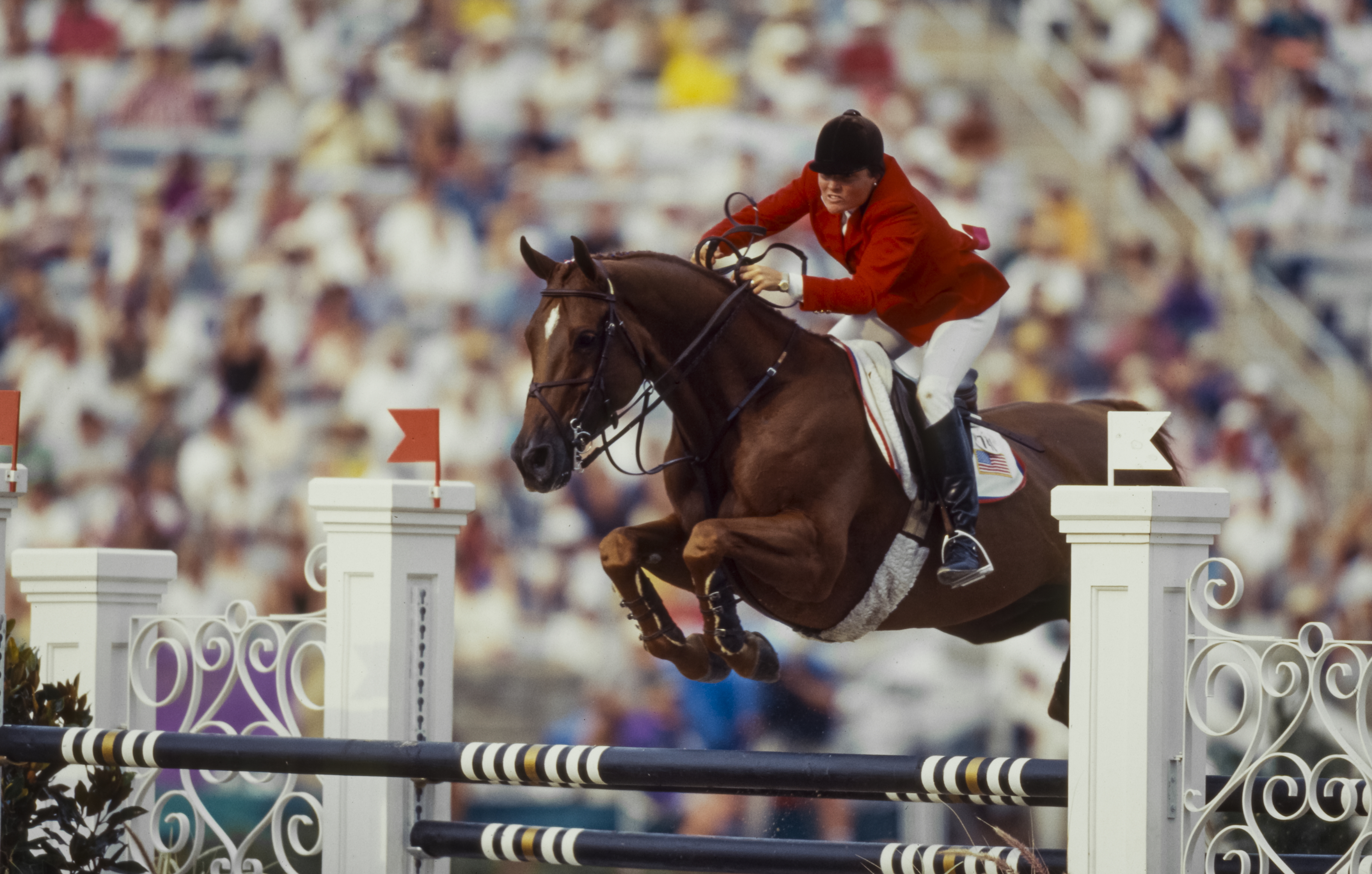
But when it comes to other accomplishments she remembers most, Leslie cites the 1993 victory for the U.S. team in the Nations Cup Aga Khan Trophy at the Dublin Horse Show. (It would be another two decades before an American squad had its name engraved again on that very special piece of silver.)
The stands were packed with wildly enthusiastic fans, as they always are for that signature event at the Royal Dublin Society’s historic showgrounds. Leslie’s situation was complicated by the fact that her mount, Gem Twist, had gotten sick on the trip across the Atlantic. While he was OK to compete, breeder/trainer Frank Chapot was rationing the warm-up jumps, so Leslie could go over only two fences before the first round.
In the second round, the prospect of victory rested on her shoulders: She had to ride anchor and go clear in order to edge out the British.
Frank, who also served as U.S. coach and admired Leslie’s gumption, once noted, “She doesn’t like to admit that there are riders in the world better than she is. No competition is ever over until after Leslie’s gone.”
And so it was in Dublin.
“My name at that time was Lenehan [she was formerly married to rider/judge Brian Lenehan], so I had the crowd with me,” she says, recalling how the Irish name got her Irish support, despite her nationality, and she delivered the fault-free trip. The fans went wild as she landed from the final fence with Gem enjoying the adulation as much as she did.
“Gem loved crowds. He was a show horse for sure, and such a legend.”
Gem was only one of the many horses who were her were partners in achievement. Albany, winner of the Invitational and Olympic team gold, belonged to Debbie Dolan, a great supporter of Leslie’s. Debbie showed him in the high amateurs and won a lot with the Thoroughbred.
“I would show him off and on,” says Leslie. “When it came time for the Olympics, I asked the Dolans if they would consider loaning him to me for that year because I thought we had a chance at the Olympics. They were nice enough to lend him to me. Albany was a sweet, sweet guy with his own style. He’d twist one way over one jump and twist one way over another. He was a very careful horse.” Like Gem Twist, who did well with several different riders, “Debbie wound up having a ton of success with him. He was always trying to please.”
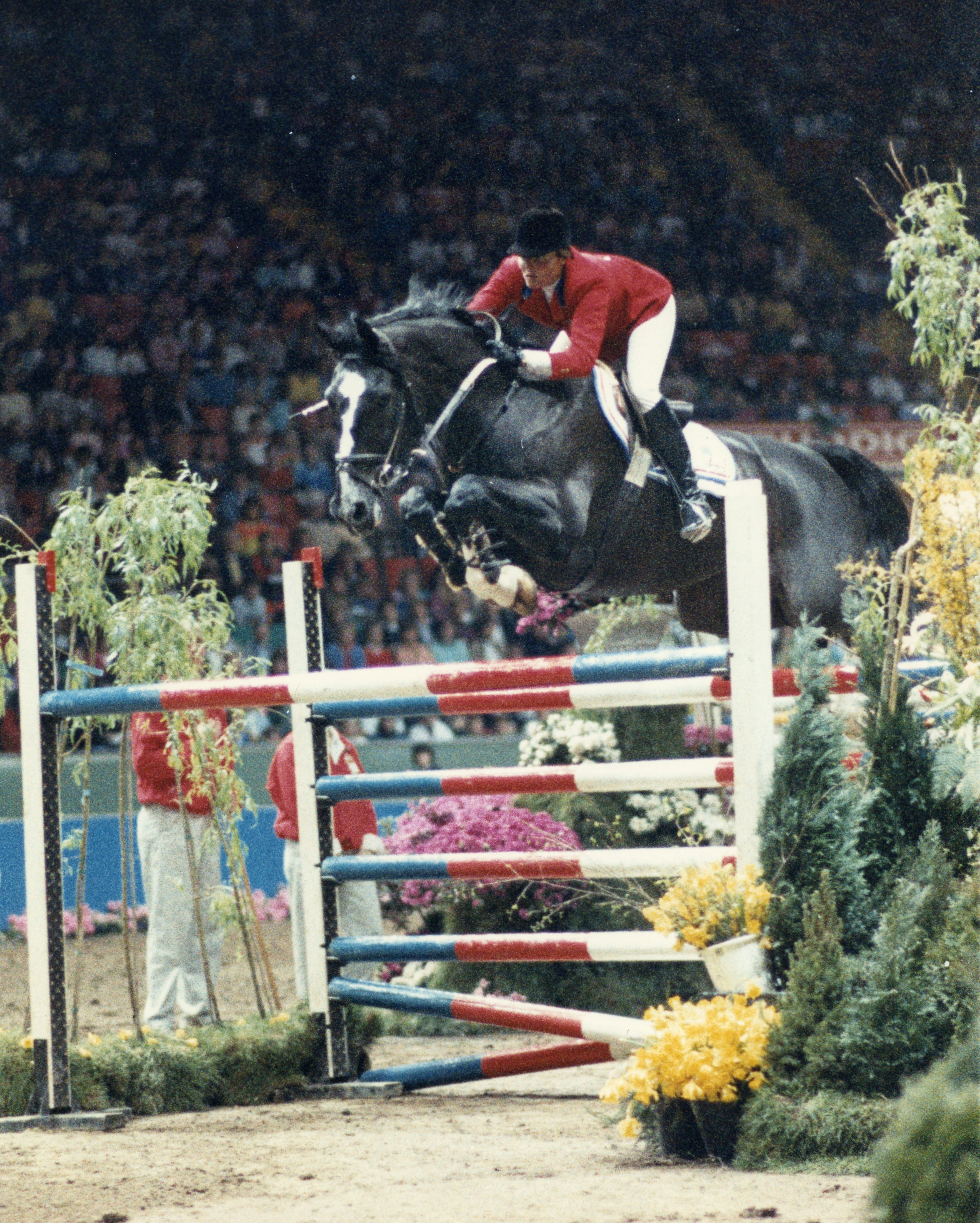
Debbie also owned McLain, named for a young McLain Ward, who won his own World Cup trophy in April. The sweet and scopey “super fast” black Oldenburg turned out to be too strong for Debbie, who was quite young at the time, “and he was borderline too strong for me,” says Leslie, who nonetheless took him to that World Cup title 31 years ago. As a strong horse, he could go day after day,” which was important for a World Cup contender.
“It’s a great asset to be able to keep thinking clearly and coldly in a round, and that’s one thing I’ve always been able to do. I make mistakes for sure, but they’re not emotional mistakes.”
Her favorite, though, was S’Blieft, her Du Maurier winner. “He was a real character, more of a dog than a horse. He’d bite the top of your hat, he’d eat your ponytail. He did tricks, he bowed, he had a ton of personality,” recalls Leslie, who owned him with her husband and a group of friends. He retired in Aiken, South Carolina, with his caregiver and enjoyed life on a farm there until his death at age 27.
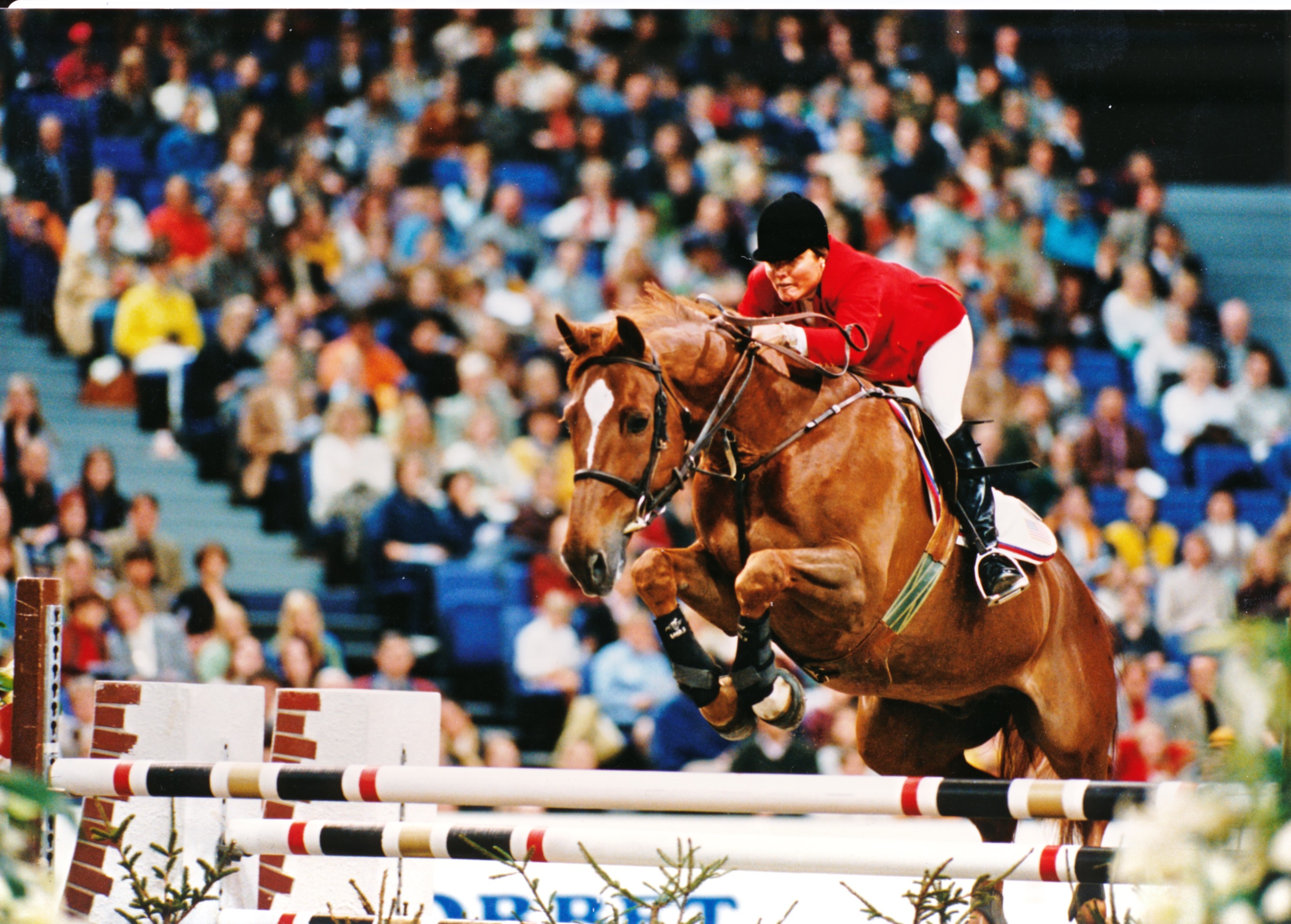
Among the stars in her string at the moment is the aptly named gray Donna Speciale. “She’s a very competitive mare, she was a real winner last year at 1.40 [meters]. If she can carry that up the ranks, she may be the best horse I ever had because she wins,” Leslie speculates.
“If it stops at 1.50, so be it. If it stops at 1.60, that would be the icing on the cake. She hates to touch jumps, she’s athletic and she enjoys it. She sees a jump and wants to jump it and she likes to go fast.”
Her other current mounts include Gentille van Spieveld, already a grand prix winner she assesses as perhaps the scopiest horse she has ever ridden; Quadam and Up And Blue Chappelle, a 9-year-old like Donna, who is waiting in the wings.
Would she consider trying for another Olympics?
“If I have a horse at that level and is that competitive, yeah, I’ll sign up,” she says.
Aside from her athletic ability and understanding of horses, Leslie has another asset that helps her. She seems to have nerves of steel. She concedes that while “you get a little bit ‘wanting-to-do-well nervous,’ I don’t get nervous in a jittery sense, just anxious to get on and compete.
“I’m a pretty calm person. It’s a great asset to keep thinking clearly and coldly in a round, and that’s one thing I’ve always been able to do. I make mistakes for sure, but they’re not emotional mistakes.”
Even in the most difficult competitive situations that cool head and upbeat attitude have served her well. As Olympic teammate Anne Kursinski notes, when the stakes were high, “I would be overly serious and a little intense,” so she was “helped by Leslie’s humor, laughter and enthusiasm. Being on a team with her would give you confidence. Of course, she was always a winner.”
Olympics and Abuse
Leslie Burr Howard’s vast experience has given her perspective on the issues of the sport she loves.
Asked for her thoughts on the decision by the International Equestrian Federation (FEI) to cut teams to three members to keep the sport in the Olympics, she says, “I think it’s a move they felt they needed to do. I think there should be a huge effort to keep it in the Olympics. It’s every little kid’s dream to be in the Olympics.”
While acknowledging there are many more important competitions today than there were in the era when the Olympics was basically “it,” she points out, “People still want to go to the Olympics.”
Toward that end, she also understands why the FEI has come down hard on any sign of abuse, such as the overuse of spurs that got two riders tossed from the Rio Olympics last summer. “These days, we cannot afford to have our sport look bad. With animal rights being so important, we have to make sure our sport is pristine clean. If things like spur marks get to be things that [animal rights people] see, it will be a problem. So I think staying one step ahead is a smart thing the FEI does.”
Leslie also emphasizes, “The care we give the horses is phenomenal. There can’t be a flaw anywhere in how the horses are maintained. Unless the horse is in top physical condition in every aspect—the vet, the chiropractor, the blacksmith, the nutrition,” he won’t be able to properly meet the demands of the sport.





